| Kingdom : | Plantae |
| Division | Magnoliophyta |
| Class: | Liliopsida |
| Subclass : | Zingiberidae |
| Order : | Zingiberales |
| Family : | Zingiberaceae |
| Genus : | Curcuma |
| Species : | C. longa |
| Scientific Name : | Curcuma longa |
| Found In : | Sanjay Gandhi National Park |
Other names : Kunyit, Haridra, Haldi, Halada, Manjal, Zirsood, terre merite, Holdi, Indian Saffron, curcuma, Pasapu, Arishina are the other related names used for the Turmeric Kunyit, Haridra, Haldi, Halada, Manjal, Zirsood, terre merite, Holdi, Indian Saffron, curcuma, Pasapu, Arishina are the other related names used for the Turmeric
Description : The plant of Turmeric is a herbaceous perennial, which is 60 -90 cm high. It has a short stem. It has large leaves oblong and up to
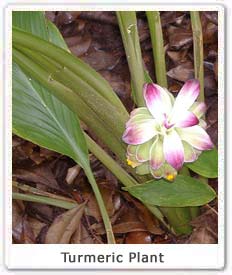 one meter long. Flowers of the turmeric appear on a spike like the stalk. Its flowers are yellow white in colour. They are sterile and donot produce viable seed. The lamina is green above and pale green below, and is 30 -40 cm long and 8 -12 cm wide. Approximately 30 flowers are produced in a spike. Inflorescence is a central spike of 10 -15 cm in length. Its pant looks like the ginger pant.
one meter long. Flowers of the turmeric appear on a spike like the stalk. Its flowers are yellow white in colour. They are sterile and donot produce viable seed. The lamina is green above and pale green below, and is 30 -40 cm long and 8 -12 cm wide. Approximately 30 flowers are produced in a spike. Inflorescence is a central spike of 10 -15 cm in length. Its pant looks like the ginger pant. Location : It is the widely cultivated tropical plant of India, which is grown from sea level to 1200 meter MSL. It is widely grown in the Sanjay Gandhi National Park of India.
Cultivation methods : Turmeric plant is panted in the month of September to October. It grows in light black, black clayey loams, and red soils in irrigated and rainfed conditions. The rhizomes are planted 5 7 cm deep. This crop is planted by the small rhizomes with one or two buds. It is harvested after 9 -10 months of planting. The lower leaves turn yellow and fall with age.
Medicinal uses : It is taken as the blood purifier and is very useful in the common cold, leprosy, intermittent, affections of the liver, dropsy, inflammation and wound healing. The rhizome of the turmeric plant is highly aromatic and antiseptic. It is even used for contraception, swelling, insect stings, wounds, whooping cough, inflammation, internal injuries, pimples, injuries, as a skin tonic. Sweetened milk boiled with the turmeric is the popular remedy for cold and cough. It is given in liver ailments and jaundice.
Other uses : The powered rhizome of this plant is used as an condiment and as an yellow dye. Its is used to colour and flavour the foodstuff. It is used in the preparation of medicinal oils, ointments and poultice. It is even used in the cosmetics.
Cultural Importance : For thousand of years it has been used in the Hindu religious ceremonies. It is the common belief among the the Hindus that Turmeric improves fertility. The dry turmeric root is considered as the symbol of purity and prosperity. It is used in Indian rites and rituals. Turmeric mixed in water is poured on the God and Goddesses. The dried turmeric roots in betel leaves are given to the women during the ceremonies as they are considered as fertile and bring good luck. Turmeric power is applied on the main entrance of the Indian Houses. The priests in the temples put tilak on the forehead with the turmeric power. Married women in India has to put Sindur a vermilion paste (mixture of turmeric with camphor).



 10:38 AM
10:38 AM
 Unknown
Unknown
 Posted in
Posted in 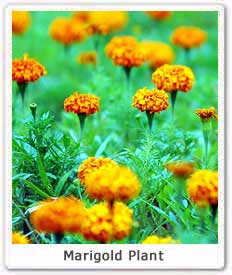 Description : It flowers from July to September. The scented flowers are hermaphrodite (have both male and female organs). It is hardy to zone 6 and is frost tender. The lower leaves are broad and spatula shaped. Upper leaves may be oblong, are smooth at the edges, and are arranged alternately along the stem. Seeds are crescent to horseshoe shaped with the rough exterior. Its branching stem grows to the height of 30- 60 cm.
Description : It flowers from July to September. The scented flowers are hermaphrodite (have both male and female organs). It is hardy to zone 6 and is frost tender. The lower leaves are broad and spatula shaped. Upper leaves may be oblong, are smooth at the edges, and are arranged alternately along the stem. Seeds are crescent to horseshoe shaped with the rough exterior. Its branching stem grows to the height of 30- 60 cm.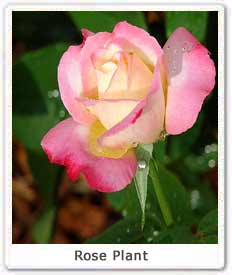 Description : There are several varieties of the Indian Roses which includes white rose, pink rose, maroon rose, red rose, yellow rose and orange rose. It has thorn on its stems. The cane has leaves and budeyes. A leaf consists of stipule, petiole, and leaflets. The leaves are -15 cm long. The leaflets usually have the segrrated margins and few small prickles on the underside of the stem. Most of the roses are deciduous. The flower has five petals.
Description : There are several varieties of the Indian Roses which includes white rose, pink rose, maroon rose, red rose, yellow rose and orange rose. It has thorn on its stems. The cane has leaves and budeyes. A leaf consists of stipule, petiole, and leaflets. The leaves are -15 cm long. The leaflets usually have the segrrated margins and few small prickles on the underside of the stem. Most of the roses are deciduous. The flower has five petals.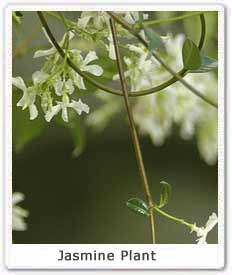 Description : Jasmine is a evergreen semi vining shrub. It grows to the height of 8- 10 feet. The flower is about one inch. It has oval green rich leaves, which have five to nine leaflets. Each leaflet is 2-3 inches long. Jasmine flowers are white in colour. Its stems are slender, trailing, green and glaborous.
Description : Jasmine is a evergreen semi vining shrub. It grows to the height of 8- 10 feet. The flower is about one inch. It has oval green rich leaves, which have five to nine leaflets. Each leaflet is 2-3 inches long. Jasmine flowers are white in colour. Its stems are slender, trailing, green and glaborous.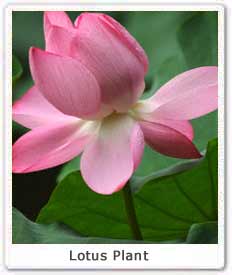 Description : Lotus is the water plant. It has broad floating leaves and bright fragrant flowers. The leaves and flowers float and have long stems that contain air spaces. It has many petals overlapping in the symmetrical pattern. The root functions of the Lotus are carried out by rhizomes that fan out horizontally through the mud below the water. The round leaves are upto 50 cm in diameter. The flowers are rosy pink with little bit of white shade. The seeds are hard and dark brown in colour. They can vary in shape from round to oval to oblong. The Lotus Flower opens in the morning and the petals fall in the afternoon.
Description : Lotus is the water plant. It has broad floating leaves and bright fragrant flowers. The leaves and flowers float and have long stems that contain air spaces. It has many petals overlapping in the symmetrical pattern. The root functions of the Lotus are carried out by rhizomes that fan out horizontally through the mud below the water. The round leaves are upto 50 cm in diameter. The flowers are rosy pink with little bit of white shade. The seeds are hard and dark brown in colour. They can vary in shape from round to oval to oblong. The Lotus Flower opens in the morning and the petals fall in the afternoon.
